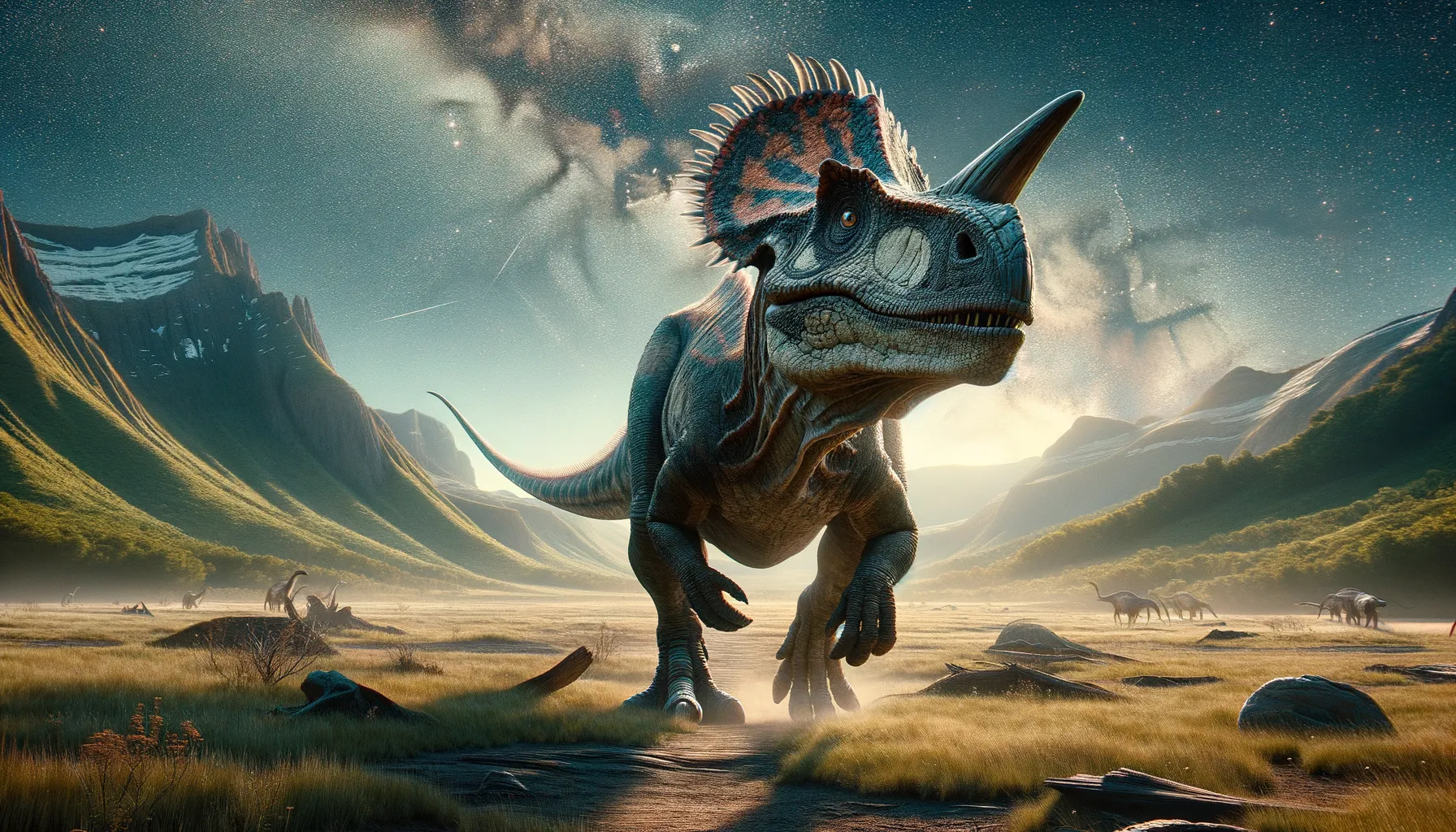
Diceratus
Horns of logic, peaceable yet firm.
Period
Cretaceous
Length
About 20 feet long.
Height
Approximately 8 feet at the shoulder.
Weight
Around 6 to 10 tons.
Diceratus was a fascinating herbivorous dinosaur that roamed what is now North America during the late Cretaceous period. It belonged to a group of dinosaurs known as ceratopsians, which were characterized by their robust bodies, beaked mouths, and often elaborate facial horns and frills. Its fossil remains have provided valuable insights into the creature's life and the ecosystem it inhabited, contributing to a better understanding of the diversity of life during that era.
Diet
Diceratus was herbivorous, primarily grazing on low-lying plants. Its beak-like mouth was well adapted to snap and chew tough, fibrous vegetation. Consequently, it likely foraged in regions rich in cycads and coniferous plants.
Hunting
As an herbivore, Diceratus did not hunt but foraged for plants. Its primary focus was likely on finding abundant vegetation that could sustain its large size. Its social behavior in herds provided protection from predators.
Environmental challenges
Diceratus faced challenges from predators such as large theropods, forcing it to rely on its horns and frill for defense. Climate changes during the Cretaceous also could have affected its food supply, requiring adaptability. Competition with other herbivores for resources likely shaped its feeding strategies. Natural disasters, like floods, also posed threats, impacting habitat and population dynamics.
Speed
Moderate, not built for high-speed pursuits.
Lifespan
Lived up to 20-30 years in the wild.
First discovery
Discovered in Montana in 2007.
Fun Facts
- Diceratus was a dinosaur that lived during the Late Cretaceous period, around 75 million years ago.
- It belonged to the group of dinosaurs known as ceratopsians, which were herbivorous and had distinctive horns and frills.
- The name Diceratus means 'two-horned' in Greek, referring to the two large horns above its eyes.
- Diceratus was similar in appearance to the more well-known Triceratops, but with some differences in the shape of its frill.
- This dinosaur was discovered in North America and its fossils have helped scientists understand more about ceratopsian diversity.
- Diceratus, like other ceratopsians, likely traveled in herds, which could have provided protection from predators.
- The functioning of its frill and horns might have been for display, defense, or species recognition.
Growth and Development
Diceratus started life as a small hatchling and grew rapidly over its first few years. Juveniles benefited from staying within protected herds, gaining safety and social learning opportunities. As they matured, their distinctive horns and frills became more pronounced, increasing their effectiveness in social interactions and predator deterrence. Growth likely slowed as they reached adulthood, focusing energy on maintenance and reproductive activities.
Habitat
Diceratus inhabited lush, floodplain environments with access to freshwater sources. These regions supported diverse plant life that sustained its dietary needs. The dinosaur coexisted with a variety of other species, including both herbivores and predators. Its habitat choice provided both feeding grounds and natural defenses against large carnivores.
Interaction with other species
Living in herds, Diceratus formed complex social structures that facilitated protection and resource sharing. It coexisted with other herbivorous species, competing for food sources. Predators like Tyrannosaurus were a constant threat, prompting defensive strategies. Symbiotic relationships with certain plants might have helped spread seeds and promoted forest growth.
Natural lifespan
It naturally lived for about 20-30 years.
Reproduction
Diceratus likely exhibited seasonal mating patterns, syncing with optimal environmental conditions. Females laid eggs, likely in communal nesting areas for added protection. Hatchlings received care within the herd, ensuring higher survival rates through cooperative defense mechanisms. This social nurturing may have played a crucial role in the growth and learning of young dinosaurs.
Social behaviour
Diceratus exhibited herd behavior, crucial for its survival and protection against predators. Communication through vocalizations and horn displays likely facilitated group cohesion. Social hierarchies might have influenced access to resources and mates. The herd acted as a family unit, where interactions supported the young and coordinated movements and foraging activities.
Fossil locations
Fossils of Diceratus have been discovered primarily in North America. Montana is a notable site for significant finds, providing rich deposits of late Cretaceous period fossils. These sites contribute valuable data to paleontologists studying ceratopsian diversity and ecology. Fossil evidence includes well-preserved skulls and skeletal fragments, helping to reconstruct its life and adaptations.
